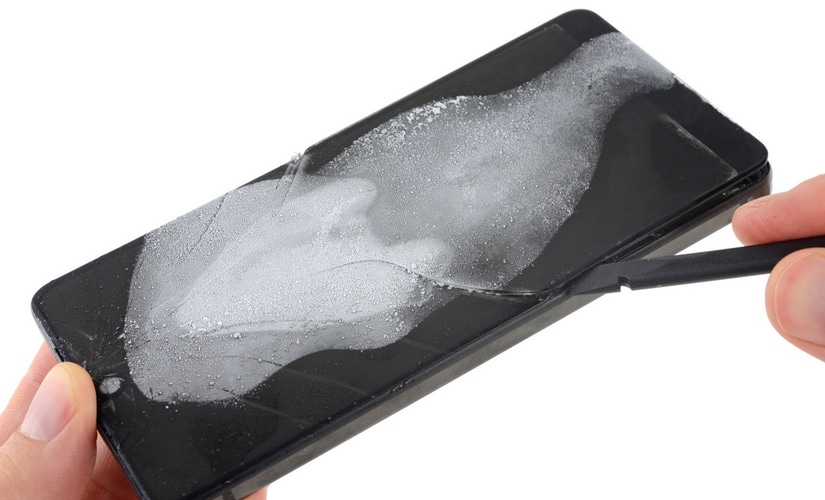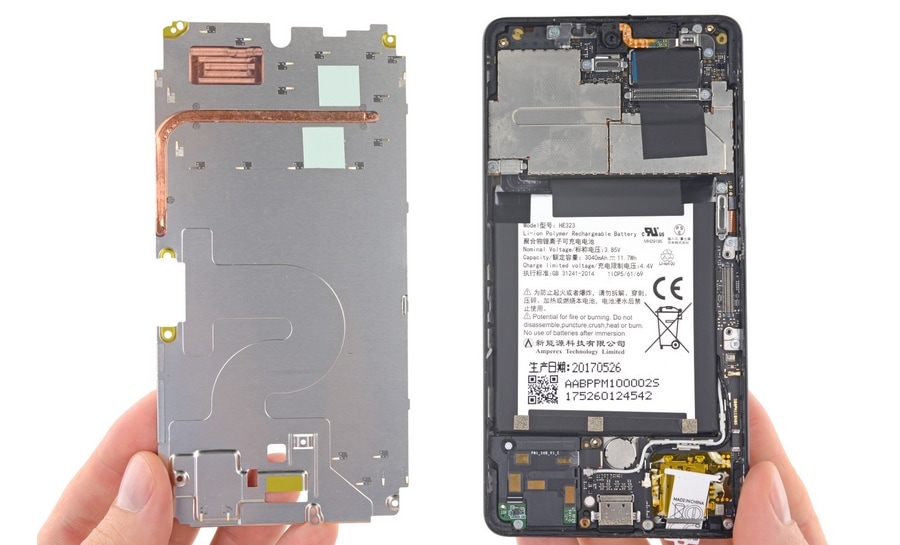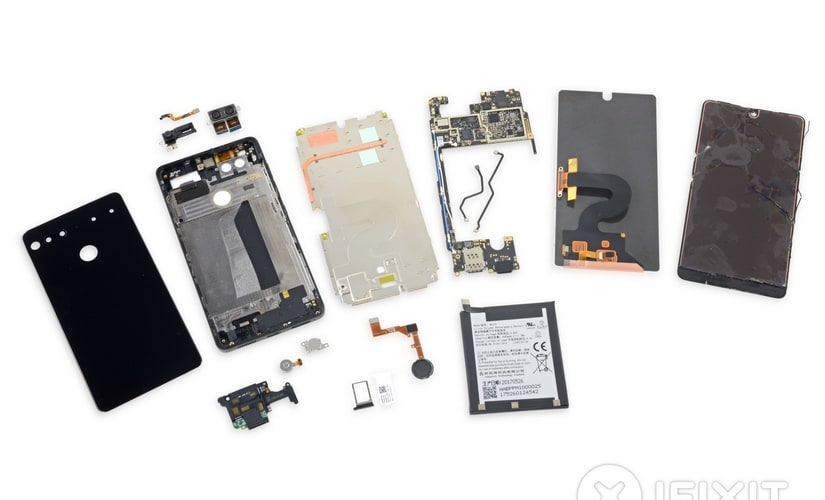Essential Phone, one of the most anticipated smartphones launched this year, is not very repairable. [caption id=“attachment_3868963” align=“alignleft” width=“380”] Essential PH-1. Essential[/caption] According to the latest
iFixit teardown
, where the company scientifically ripped apart the Essential PH-1, a creation by Andy Rubin’s fledgling company, the phone received one of the worst repairability ratings for a smartphone yet. The device scored 1 out of 10 on the ‘repairability’ scale where 10 is for the devices which can easily be repaired. iFixit had to freeze the front screen of the device after they realised that there was no way to get inside the device from the back side. They described the freezing experience as ‘harrowing’ while trying to open the back and ended up cracking the front screen in an attempt to remove the display. [caption id=“attachment_4014263” align=“alignnone” width=“825”]
Essential PH-1. Essential[/caption] According to the latest
iFixit teardown
, where the company scientifically ripped apart the Essential PH-1, a creation by Andy Rubin’s fledgling company, the phone received one of the worst repairability ratings for a smartphone yet. The device scored 1 out of 10 on the ‘repairability’ scale where 10 is for the devices which can easily be repaired. iFixit had to freeze the front screen of the device after they realised that there was no way to get inside the device from the back side. They described the freezing experience as ‘harrowing’ while trying to open the back and ended up cracking the front screen in an attempt to remove the display. [caption id=“attachment_4014263” align=“alignnone” width=“825”] Image Credit:
iFixit
[/caption] The report points out that the overuse of adhesives made it ‘insanely challenging’ to open the smartphone and get inside it to make repairs. In fact, opening the device is likely to cause more damage to the device than carrying out any intended fixes. The USB Type-C port is soldered to the motherboard of the device, which means that any damage to the port would require removing the port from the motherboard and then soldering it back on. [caption id=“attachment_4014265” align=“alignnone” width=“900”]
Image Credit:
iFixit
[/caption] The report points out that the overuse of adhesives made it ‘insanely challenging’ to open the smartphone and get inside it to make repairs. In fact, opening the device is likely to cause more damage to the device than carrying out any intended fixes. The USB Type-C port is soldered to the motherboard of the device, which means that any damage to the port would require removing the port from the motherboard and then soldering it back on. [caption id=“attachment_4014265” align=“alignnone” width=“900”] Image Credit:
iFixit
[/caption] This is assuming that one makes their way inside the PH-1 without damaging the screen. The decision to solder the port to the motherboard is bad considering that the device does not come with a 3.5 mm headphone jack. This means that the port will undergo a lot more wear and tear than any other device with a 3.5 mm headphone jack. [caption id=“attachment_4014279” align=“alignnone” width=“825”]
Image Credit:
iFixit
[/caption] This is assuming that one makes their way inside the PH-1 without damaging the screen. The decision to solder the port to the motherboard is bad considering that the device does not come with a 3.5 mm headphone jack. This means that the port will undergo a lot more wear and tear than any other device with a 3.5 mm headphone jack. [caption id=“attachment_4014279” align=“alignnone” width=“825”] Image Credit:
iFixit
[/caption] The inside of Essential Phone consists of a number of ‘invisible seams’ that make it difficult to repair, says iFixit. The company also points out that the battery in the device is secured by a ‘repair-friendly stretch-release adhesive’ but it hardly counts for anything significant considering the difficulty in getting to the battery.
Image Credit:
iFixit
[/caption] The inside of Essential Phone consists of a number of ‘invisible seams’ that make it difficult to repair, says iFixit. The company also points out that the battery in the device is secured by a ‘repair-friendly stretch-release adhesive’ but it hardly counts for anything significant considering the difficulty in getting to the battery.
Essential Phone is probably the worst smartphone to repair; gets a 1/10 repairability rating from iFixit
tech2 News Staff
• September 6, 2017, 12:52:32 IST
Essential Phone, one of the most anticipated smartphones launched this year, is not very repairable, receiving a repairability score of just 1/10 on iFixit
Advertisement
)
End of Article